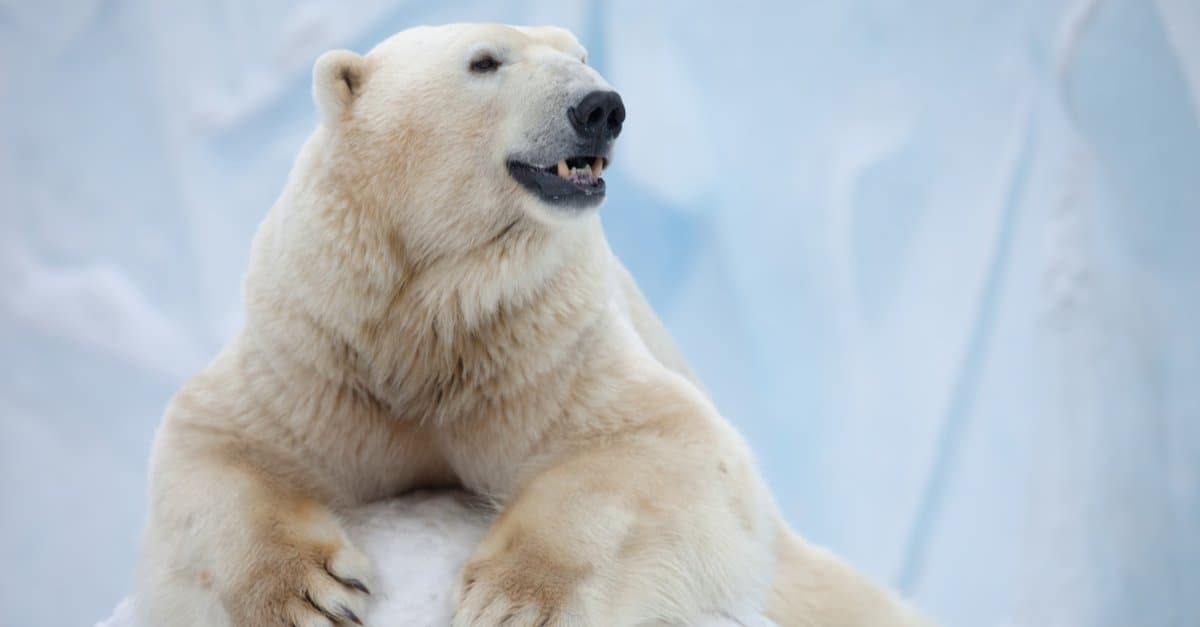In the vast wilderness of Canada, there lurk creatures that send shivers down the bravest of spines. From the frigid Arctic regions to the dense forests and sprawling prairies, a myriad of terrifying animals call this great nation home. Brace yourself as we take a heart-pounding journey into the chilling world of Canada’s scariest creatures! While many of these animals are the scariest animals Canada has to offer, not all of them are incredibly dangerous.
1. Cougars
The first entry on our list of the scariest animals in Canada is the cougar. Cougars, also known as mountain lions or pumas, are large wild cats found in various regions across Canada. While they may seem majestic and graceful, these solitary predators can be scary and dangerous due to their hunting instincts and powerful physical abilities.
Cougars have distinctive tawny fur, strong muscles, and long tails. They can grow up to eight feet long, including their tail, and weigh around 150 to 200 pounds. These stealthy creatures are well-adapted to diverse environments, such as forests, mountains, and grasslands.
Their hunting instincts are one of the main reasons why cougars are feared. They are skilled hunters, using their keen senses and stealth to stalk and ambush their prey. Cougars primarily feed on deer and other smaller mammals, but they have been known to attack livestock and occasionally, humans.
Although cougar attacks on humans are rare, they can occur when the cougar feels threatened or perceives a person as potential prey. Their territorial nature can lead to aggressive behavior if they encounter humans in their habitat.
To avoid dangerous encounters, people living in or visiting cougar habitats should take precautions. Avoiding hiking or jogging alone during dawn and dusk, making noise while walking, and keeping children and pets close can help prevent surprises and potential conflicts with cougars.
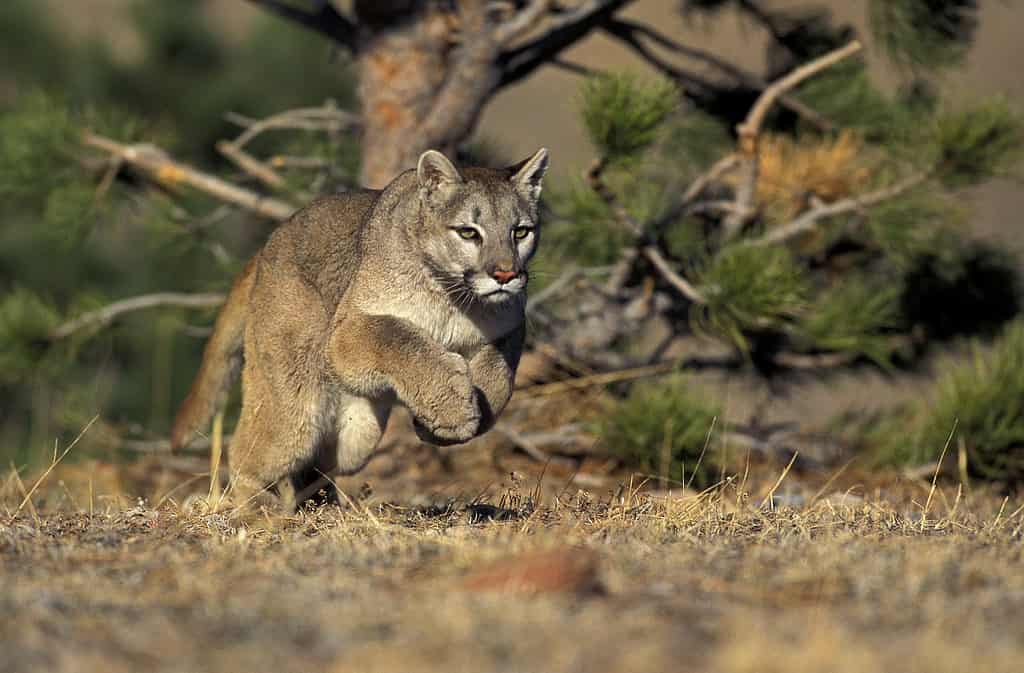
Mountain lions or cougars can reach 50 miles per hour in short bursts.
©iStock.com/slowmotiongli
2. Grizzly Bears
Canada is home to the mighty grizzly bear, an animal worthy of both respect and terror. Because of their size, strength, and aggressive nature, these creatures are often viewed with fear.
Grizzly bears get their moniker from the grizzled, silvery tips of their fur, which are easily visible. When standing on their hind legs, males may reach heights of over seven feet and weights of up to 800 pounds, making them one of the biggest land-dwelling carnivores in North America.
The grizzly bear’s skill as a hunter is a major contributor to its fearsome reputation. They consume both plants and animals, making them omnivores. They eat a wide variety of foods, from berries and fish to small animals and even moose and elk. Grizzlies have formidable teeth and claws, making them formidable predators.
While they are not typically aggressive towards humans, grizzly bears can be dangerous if they feel threatened, surprised, or cornered. A mother bear with cubs is especially protective and might attack to defend her offspring. Their sheer size and strength make them formidable adversaries.
To minimize potential risks when in grizzly bear country, it’s essential to take precautions. Hikers and campers should make noise to alert bears of their presence, carry bear spray, and properly store food to avoid attracting them.

Grizzly bears can be quite dangerous to unprepared hikers and campers.
©Jack Nevitt/Shutterstock.com
3. Black Bears
In Canada, you can encounter magnificent black bears in a variety of habitats. Although they are smaller than grizzly bears, black bears nevertheless have several characteristics that make them deadly.
Male black bears can weigh anything from 200 to 600 pounds as adults and stand anywhere from three to five feet tall. Black, brown, cinnamon and even golden fur colors are all possible on these animals.
Their conduct and instincts are so natural that they may get them into some rather precarious situations. The black bear is an opportunistic omnivore, meaning it will eat everything it can get its paws on. Because of their acute sense of smell, they can locate human food sources such as dumpsters and camp kitchens. An acclimated black bear may grow less wary of humans and more proactive in pursuing human food and other resources.
Encountering a black bear in the wild can be unsettling. While they typically avoid humans, they may feel threatened if they sense danger or are cornered. In such situations, they may act defensively, which can be dangerous for both humans and bears.
To prevent conflicts and ensure safety, people in bear country need to take precautions. Properly storing food, disposing of trash appropriately, and making noise while hiking to alert bears of your presence are essential steps. If a close encounter does occur, it’s best to speak calmly and back away slowly without turning your back on the bear.
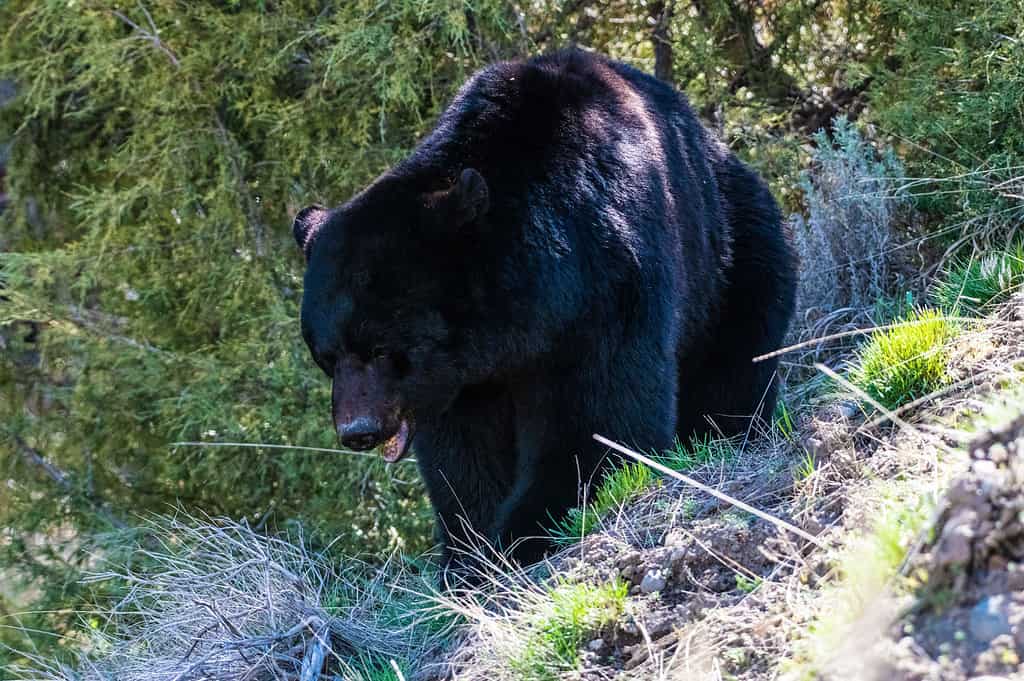
Black bears are mostly found in forested areas of Canada.
©iStock.com/John Morrison
4. Polar Bears
Even though polar bears are seldom seen by people in Canada, it’s still important to include them on our list of the scariest animals in Canada. Some may find them cute; however, they are quite lethal predators despite their fuzzy looks.
Adult male polar bears may weigh up to 1500 pounds and tower as tall as 10 feet while standing on their hind legs, making them the biggest land carnivores. They are protected from the Arctic’s subzero temperatures by their thick blubber and dense fur.
The primary reason why polar bears are considered scary and dangerous is their exceptional hunting ability. As carnivores, they mainly prey on seals, using their strong swimming skills to navigate through icy waters. When hunting on sea ice, they rely on their keen sense of smell to detect seals’ breathing holes and ambush them.
Encounters with polar bears can be hazardous for humans. Although they are not inherently aggressive towards people, the scarcity of their natural prey due to climate change has led to an increase in human-bear interactions. Starving bears may become more desperate and approach human settlements in search of food, potentially leading to dangerous situations.
To protect both humans and polar bears, it is vital to follow guidelines for safety in polar bear country. In areas where polar bears are known to roam, precautions such as carrying bear deterrents, traveling in groups, and properly storing food are crucial.

Polar bears are very rarely seen in Canada, but climate change is changing where they are seen.
©GTW/Shutterstock.com
5. Arctic Wolves
Arctic wolves, inhabiting Canada’s frigid northern regions, are captivating creatures with a blend of beauty and danger. And they are worthy of being on our list of the scariest animals in Canada. These wolves have adapted remarkably to survive in harsh Arctic conditions and have evolved formidable hunting skills that can make them appear scary and dangerous.
These subspecies of the gray wolf found in the Arctic have white fur that allows them to blend in with the white terrain. They are effective predators because of their excellent vision, smell, and hearing, which allow them to locate prey at large distances and in poor light.
One of the main reasons why arctic wolves are considered potentially scary is their hunting prowess. They are skilled pack hunters, using teamwork and strategic planning to take down large animals like muskoxen, caribou, and Arctic hares. Their coordinated efforts and strength as a group make them formidable opponents to their prey.
While arctic wolves generally avoid encounters with humans, they can be dangerous if provoked or cornered. Like all wild animals, they may act defensively to protect themselves or their pack, potentially leading to confrontations that can result in injuries.
To ensure coexistence with arctic wolves in their natural habitat, it is crucial to respect their space and refrain from approaching or feeding them. As with any wildlife, maintaining a safe distance and observing from afar allows for an appreciation of their beauty while minimizing potential risks.
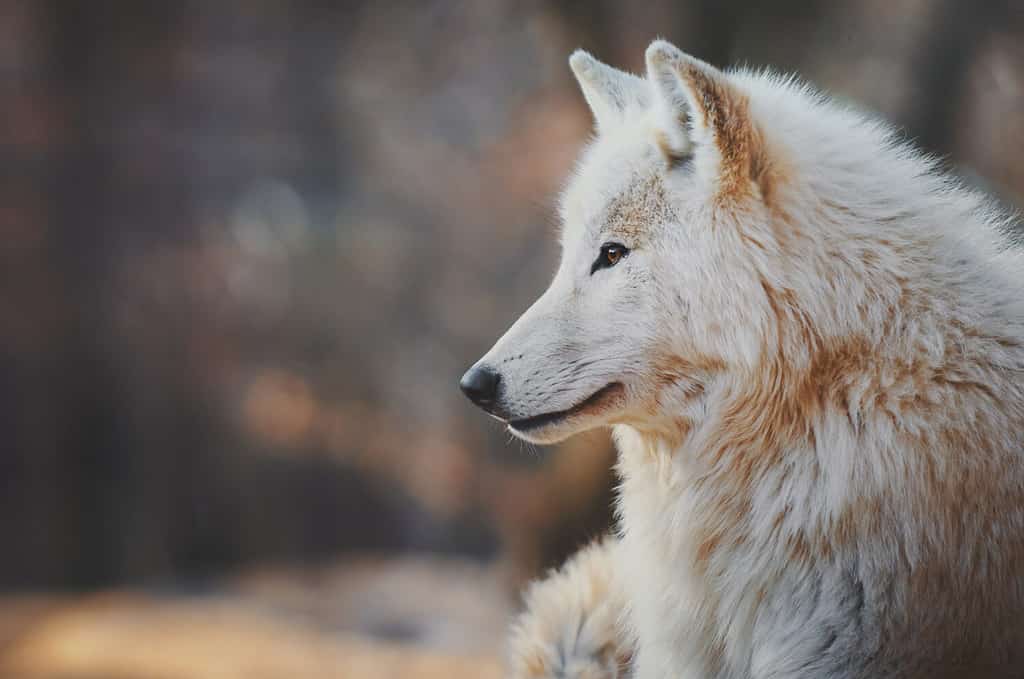
Arctic wolves are majestic but dangerous animals.
©JDzacovsky/Shutterstock.com
6. Moose
Moose are iconic inhabitants of Canada’s wilderness. They are magnificent creatures that command both respect and caution, as they are one of the scariest animals in Canada. Despite their peaceful demeanor, they can be considered scary and dangerous due to their sheer size and occasional unpredictable behavior.
Adult male moose, known as bulls, can reach heights of seven feet at the shoulder and weights about 1,500 pounds. Their massive antlers, which may grow to a breadth of six feet, are employed in courtship and exhibition.
Moose are mostly herbivores, eating on plants, leaves, and aquatic vegetation; yet, when they detect a threat or challenge from humans or other animals, their normally peaceful demeanor can turn hostile. Bulls tend to become more aggressive and possessive during the mating season in the fall, which can be dangerous for humans.
Moose are known to charge when feeling cornered or harassed, and their powerful hooves can deliver devastating kicks. Collisions with vehicles are also a significant concern, especially in areas where moose frequently cross roads.
Protect yourself around moose by keeping your distance and not getting too close if you spot one. Keep your cool, give the moose space, and carefully retreat from the area if you encounter one.

Bull moose can be dangerous, especially during mating season.
©ArtBBNV/Shutterstock.com
7. Northern Pacific Rattlesnakes
Despite their scarcity, Canada is home to several venomous snake species, including the Northern Pacific rattlesnake, which is especially common in the southern areas of British Columbia. Their venomous nature and defensive temperament are major contributors to their intimidating reputation.
These rattlesnakes are easily recognizable because of their triangular heads and warning rattles at the end of their tails. Smaller than most other rattlesnake species, their average length is about two to four feet.
Rattlesnakes in the Northern Pacific employ their powerful venom to paralyze their prey, which comprises rodents and other small animals. Although these snakes don’t actively hunt humans, they nonetheless pose a risk to anybody who encounters them since they may bite if they feel threatened.
Being cautious and knowledgeable about their habitat and behavior is essential to avoid dangerous encounters. If you encounter a rattlesnake in the wild, it’s crucial to give it space and back away slowly to reduce the risk of being bitten.
Thankfully, antivenom and medical care have made serious injuries from the Northern Pacific uncommon, and deaths from them even more uncommon. Some bites may not result in life-threatening consequences, but it is still important to get medical assistance right once bitten.
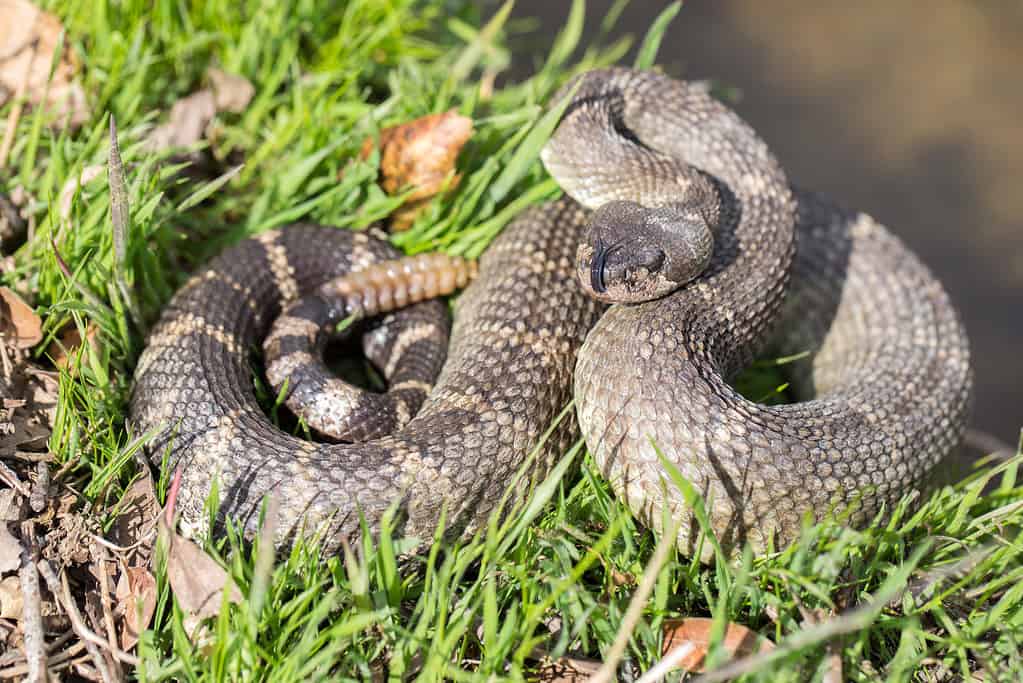
Northern Pacific rattlesnakes are found in both Canada and the United States.
©iStock.com/yhelfman
8. Massasauga Rattlesnakes
Due to their venom, Canadian Massasauga rattlesnakes are fascinating but potentially lethal animals. The Eastern Massasauga rattlesnake, of which these snakes are a subspecies, is endemic to certain regions of Ontario and a few other Canadian provinces.
When compared to other species of rattlesnake, the Massasauga is modest at about two to three feet in length. They can be anything from gray to light brown, and all of them have noticeable black stripes.
The venom of Massasauga rattlesnakes is used primarily to immobilize their prey, which includes small rodents and occasionally birds. Although not aggressive towards humans, they may bite if threatened or cornered. Their venom can cause pain, swelling, and potential complications, making it crucial to avoid close encounters.
Massasaugas are skilled at camouflage. They prefer to remain hidden in their natural habitats, such as grasslands, marshes, and wooded areas. Their quiet and stealthy behavior makes them challenging to detect, increasing the risk of unintentional encounters.
As a vulnerable species in Canada, these rattlesnakes and their habitats are the focus of conservation efforts. People living in areas frequented by Massasaugas must be alert to the possibility of seeing these creatures in their natural environments.

This snake species has a bite that could be deadly if medical attention isn’t given right away.
©Vladislav T. Jirousek/Shutterstock.com
9. Wolverines
Wolverines are Canadian native animals that have a reputation for both fearlessness and ferocity. While they might not be visually imposing like some larger predators, wolverines are considered scary and dangerous due to their strength, agility, and cunning nature.
Wolverines have thick, black coats and muscular limbs that allow them to navigate rocky areas with ease, and they have the appearance of a stocky, medium-sized animal. They have been observed hunting caribou and moose, which are considerably larger than them, and feeding on carrion.
Wolverines are solitary animals and fiercely territorial. When they feel threatened or encounter a perceived rival, they can become aggressive and confrontational, posing a potential danger to those who come too close.
These resourceful creatures are also notorious for their cunning and tenacity. They have been observed to raid traps set by trappers, earning them the nickname “devil bear” for their ability to thwart human efforts.
Encounters with wolverines in the wild are rare due to their elusive nature, but it is crucial to exercise caution when in their territory. Giving them ample space and avoiding any actions that may provoke them can help prevent potential confrontations.
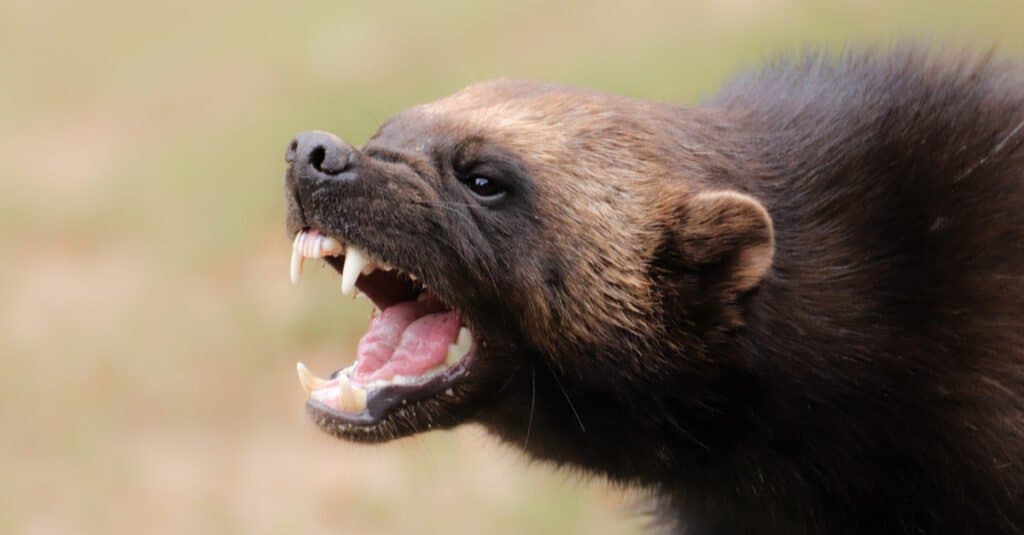
Wolverines are ferocious predators that can kill animals even larger than themselves.
©DenisaPro/Shutterstock.com
10. Elk
Elk are majestic and imposing creatures that inhabit various regions of Canada and capture the admiration of wildlife enthusiasts. However, despite their captivating presence, elk can be considered scary and potentially dangerous due to their size, strength, and occasionally unpredictable behavior.
Bull elk (a.k.a. males) may reach heights of five feet at the shoulder. They can weigh over 700 pounds as adults; cow elk (a.k.a. females) are somewhat smaller but still powerful. During mating season, bulls will utilize their enormous antlers. Their antlers can grow to a breadth of four feet. They use them to show off and compete with one another.
Although elk are primarily herbivores, feeding on plants, leaves, and grasses, they can become aggressive during the rutting season in the fall. Bulls may engage in intense battles to establish dominance and access to mating opportunities, leading to unpredictable behavior that can pose a danger to bystanders.
Encountering an elk in the wild requires caution and respect. While they generally avoid confrontations with humans, it’s essential to give them space and avoid getting too close. Especially so during the breeding season when their behavior can be particularly unpredictable.
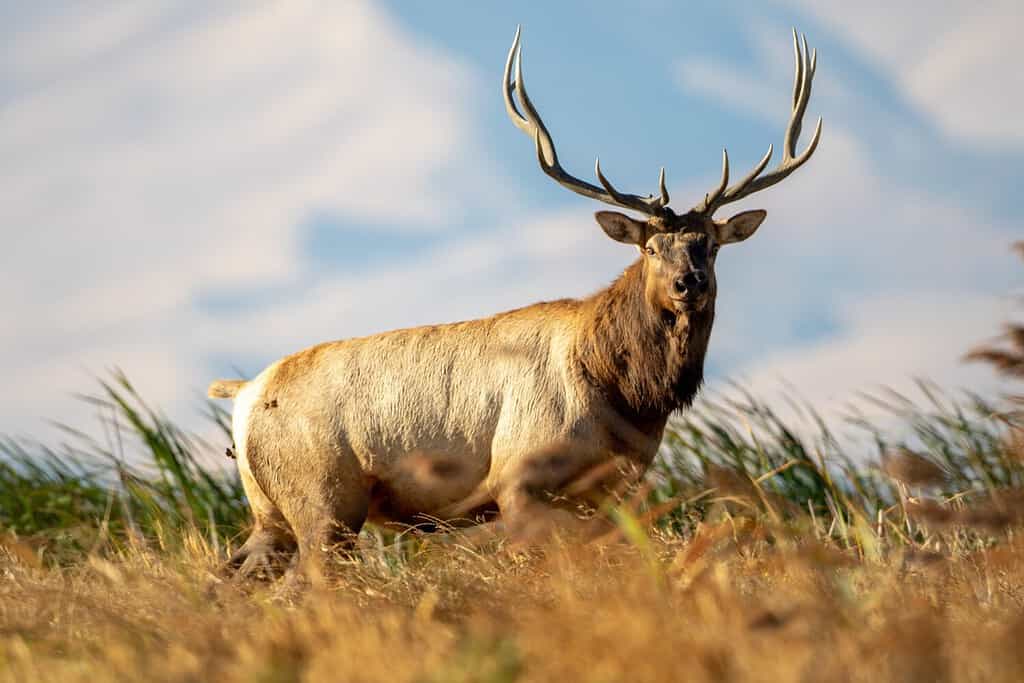
Male elks can be dangerous during the mating season, similar to moose.
©RelentlessImages/Shutterstock.com
Summary of the Scariest Animals You Can Encounter in Canada
| # | Animals |
|---|---|
| 1 | Cougars |
| 2 | Grizzly Bears |
| 3 | Black Bears |
| 4 | Polar Bears |
| 5 | Arctic Wolves |
| 6 | Moose |
| 7 | Northern Pacific Rattlesnakes |
| 8 | Massasauga Rattlesnakes |
| 9 | Wolverines |
| 10 | Elk |
Thank you for reading! Have some feedback for us? Contact the AZ Animals editorial team.

